Last November I wrote an article for this column about the color blue in nature: how rare it is, and how difficult it is for nature to even produce it. To my delight, it garnered a lot of interest and curiosity, and even a letter to the editor with a story about why robins eggs are blue. I thought this a dazzling and timely! example of blue in nature to write about in springtime.
Yes, robins eggs are blue, but so are the eggs of many other local birds. Most of the thrushes in this area the wood thrush, hermit thrush and veery have blue eggs, as do Eastern bluebirds, European starlings, great blue herons and gray catbirds (although within all of these there can be a great deal of variation).
Still others are blue with brown speckles: scarlet tanager, red-winged blackbird, and house finch eggs, to name just a few. But why?
To understand why so many birds have blue eggs, we need to examine both the source of the color, and possible evolutionary advantages to having blue eggs.
First, the source of the blue in birds eggs is the pigment biliverdin, a word that derives from the Latin meaning green bile. In the final stages of egg development within the birds body, the gelatinous and membrane-coated egg enters the shell gland (uterus), wherein the calcium carbonate shell forms and pigments are deposited throughout it.
Biliverdin is one of just two pigments that are responsible for all birdegg coloration; the other is protoporphyrin, which contributes to brownish-red hues (such as brown speckles). Biliverdin and protoporphyrin combine (or dont, in the case of all brown, or all white, or all blue eggs), in the shell gland to produce the birds signature egg coloration and pattern (if any).
If youve never heard of biliverdin, as I hadnt, perhaps you know bilirubin, the pigment of concern in jaundiced newborn humans. Bilirubin (derived from the Latin meaning red bile) is a yellowish compound that is produced during the normal breakdown of red blood cells. Processed by the liver, bilirubin is eventually excreted out of the body.
Because the breakdown of bilirubin is a function that newborns bodies dont do well yet, it is a relatively common occurrence for newborns to have jaundice, or yellow coloration in their skin and eyes. Most cases of jaundice are easily treated with phototherapy, using either sunlight or artificial light from bilirubin lamps.
And heres where we get back to blue: It is specifically the blue part of the light spectrum (wavelengths of around 450 nanometers) that breaks down bilirubin enough to be excreted, thereby lowering potentially harmful levels of the compound.
Another instance of biliverdin and bilirubin made visible occurs in the bruising of our skin. When bruises heal, the body breaks down spilled blood cells and their hemoglobin. The iron in hemoglobin is scavenged and reused, usually to form new red blood cells. The rest of the hemoglobin is decomposed into biliverdin you can see this as your bruise turns bluish green then converted to bilirubin, which makes your bruise look yellowish. Then, you guessed it, the bilirubin is processed by the liver and excreted out of the body.
Well, brown speckled eggs have a clear purpose: camouflage. Most ground-nesting birds lay eggs that camouflage with the ground so that when the parents need to leave the nest, their eggs are less visible and therefore less susceptible to predation. White eggs seem to be laid primarily by cavity nesters, for whom eggs are always hidden from view, thereby providing no advantage to having pigmented eggs. Yet some open-nesting birds lay white eggs, and some non-ground nesters lay brown speckled eggs, so more is probably going on here.
When it comes to blue, a theory that seems to have a lot of traction is sunblock. The color blue strikes a balance between being dark enough to protect eggs from damaging UV rays, while also being light enough so as to not overheat the eggs, since darker colors absorb more light and therefore, heat. When the parent is off the nest in search of sustenance, blueness might help protect the exposed eggs from the suns light.
Eggs of cavity nesters, in constant shade, would not need this protection, perhaps helping to explain why these eggs have no pigmentation. But ground nest eggs would be quite exposed to the sun when the parents left, so why arent more of those eggs blue?
Studies have correlated egg color vibrancy to female bird health. Theyve also probed bird vision, asking what colors birds see on their eggs. Scientists have studied the purpose of color variation throughout a single egg, and asked whether different colored eggs in a single brood indicate hatching order.
We dont yet know the answers to these questions. In fact, we dont know for sure why birds eggs are the colors they are. Nevertheless, lets marvel and wonder at birds eggs this spring, and be thankful for blue and all the other colors in nature.
Earth Matters has been a project of the Hitchcock Center for the Environment for 13 years. Amid the pandemic, the Hitchcock Center adapted its programming and has a sliding-scale fee structure for families facing financial challenges. To help the Hitchcock Center during this difficult time, consider a donation at hitchcockcenter.org.Earth Matters, written by staff and associates of the Hitchcock Center for the Environment at 845 West St., Amherst, appears every other week in the Daily Hampshire Gazette. For more information, call 413-256-6006, or
If you’ve never heard of biliverdinas I hadn’tyou may be familiar with bilirubin, which is the pigment that jaundiced newborn humans should be concerned about. Bilirubin, which means “red bile” in Latin, is a yellowish substance that is created when red blood cells normally break down. Bilirubin is eventually eliminated from the body after being broken down by the liver.
Regarding blue, sunblock is a theory that appears to be quite popular. Since darker hues absorb more light and consequently heat, blue finds a balance between being dark enough to shield eggs from harmful UV rays and light enough to prevent overheating the eggs. Blueness may help shield the exposed eggs from the sun’s rays when the parent leaves the nest in search of food.
It is fairly common for newborns to experience jaundice, or yellow coloring in their skin and eyes, because the body is still learning how to break down bilirubin. The majority of jaundice cases can be effectively treated with phototherapy, which uses artificial light from bilirubin lamps or sunshine.
Some eggs, like those of the scarlet tanager, red-winged blackbird, and house finch, have brown specks on their blue color. But why?.
Well, brown speckled eggs have a clear purpose: camouflage. The majority of ground-nesting birds conceal their eggs in the ground when they lay them, making them less visible and therefore less vulnerable to predators when the parents have to leave the nest. There seems to be no benefit to having pigmented eggs because white eggs are mainly laid by cavity nesters, whose eggs are always hidden from view. However, more is most likely occurring here as some non-ground nesters lay brown speckled eggs and some open-nesting birds lay white eggs.
Are Blue Bird Eggs Healthier?
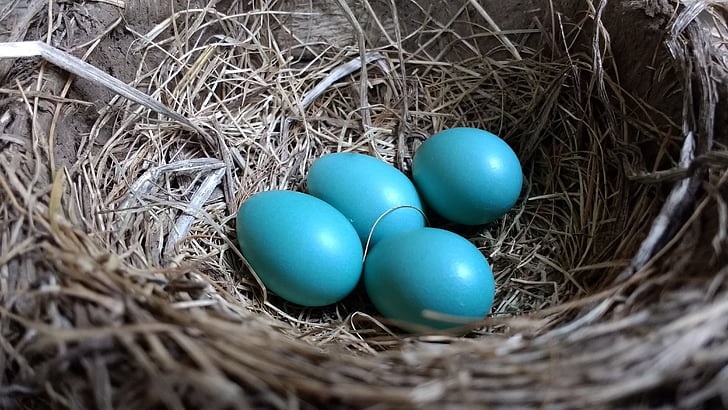
The color of an egg does not determine the nutritional value it provides to its consumer, despite the widespread belief that blue eggs are healthier than other colors.
The health advantages of a differently-colored egg are identical to those of a regular white chicken egg that you eat.
Therefore, you are absolutely mistaken if you think that blue eggs are healthier than white eggs!
What Birds Lay Blue Eggs?
To name a few, the most common species that are known to lay vivid blue eggs are House Finches, Common Myna, Magpie, Emus, Snowy Egrets, Great Tinamou, Blue Jays, American Robin Birds, Starlings, Red-winged Blackbirds, Dunnocks, and Blue-footed Booby.
The intriguing traits of birds that lay eggs with blue speckles are listed below.
Because of their constant chirping, blue jays are among the liveliest and noisiest birds you will ever see. When they build a nest in your backyard, you can almost feel the life all around you.
These birds lay blue eggs that are around 1. 3 inches long.
The width of these eggs is somewhere around 0. If you have blue jays nesting in your backyard, you would be fortunate to see these incredibly cute and unusual-looking bird eggs, which measure 7 inches, making them one of the cutest eggs around!
The tiny brown or grey dots surrounding the eggs of Blue Jays add even more artistic touches. Sometimes they start off looking like green eggs and eventually turn blue.
These females dont lay a lot of eggs. Instead, while in the nest, they produce four to seven of them. In reality, parent birds give their broods the finest care possible, tending to a maximum of two during each season.
The male Blue Jays provide all the food, while the females spend the majority of their time protecting the eggs. These blue eggs hatch between seventeen to twenty-one days.
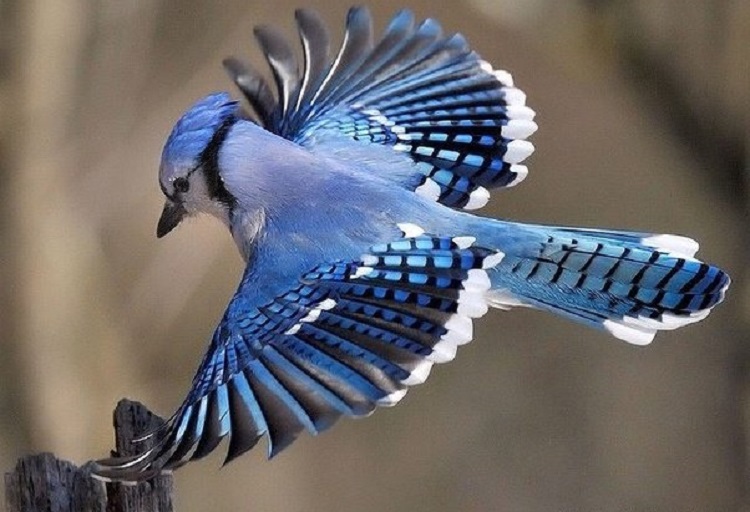
Even though blue jays take care to build their nests in the safest locations possible, predator attacks are a constant threat to these nests. Predators such as snakes, raptors, crows, cats, and squirrels are observing these eggs.
The primary concern for blue jays is that potential predators of their blue eggs are present on the ground, such as snakes and cats, as well as in the air, such as osprey and crows, who constantly anticipate attacking the nest.
Blue Jays attempt to conceal their nests by laying their eggs mostly in the middle of green trees or shrubs in order to fend off these attacks.
The Blue Jays typically begin their search for a nesting site as soon as February arrives. The couple constructs the nest after determining the ideal location, and the female lays the eggs in March.
It is advisable to leave the adorable blue eggs alone if you are fortunate enough to come across a Blue Jay species nest.
Despite your perception, the nest is not abandoned. These birds are constantly around, waiting for you to depart, and they never leave their nests.
In fact, because these birds are extremely territorial and fiercely protective of their blue eggs, you might even face attacks if you delay leaving the nest.
Another species of bird that lays blue eggs is the American Robin Bird. These light blue eggs have a distinctive appearance that makes them easy to recognize from a distance.
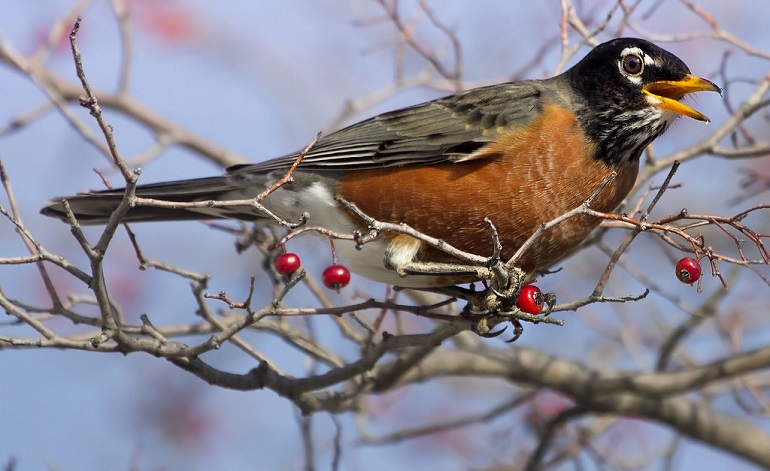
The eggs’ unique pigment, biliverdin, is what gives them their blue hue. This green pigment called bile covers the blue eggs completely when the female lays them. This is also the primary cause of why these eggs initially appear primarily blue-green.
People frequently become confused when they see these eggs in urban and suburban areas because the amount of pigment deposited on them determines the egg’s shade.
Sometimes they start out looking bright blue, and other times they have an icy blue-green hue or a lighter shade of blue.
High deposit eggs are extremely dark blue in color. Studies have shown that these dark egg shells warm the egg and promote a speedy hatch while shielding the inside of the egg from the sun’s damaging UV rays!
Because the embryo is so weak and delicate, it needs to be shielded from the sun’s rays. This hard outer shell serves as a shelter to keep the embryo safe.
Because American Robins lay blue eggs, some of which are darker than others, it is also thought that the color of the smaller eggs is bluer.
Simultaneously, the first eggs laid among the brood have a darker shade than the later ones.
Numerous studies have also demonstrated that mother American Robins successfully laid dark blue bird eggs when they followed the healthiest diet and ate nutritious meals.
On the other hand, eggs with light colors were laid by those with poor diets.
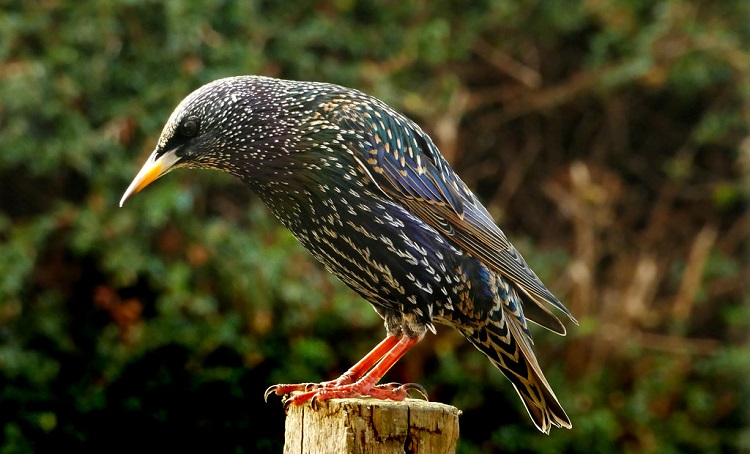
Starlings are incredibly beautiful birds that are a visual feast. There is no doubting that they are a gift from nature to people who appreciate beautiful sights.
Furthermore, European Starlings are even more unique because they lay blue-toned eggs.
European Starlings lay nine eggs in their nests in urban and suburban areas in a single clutch. It’s possible that each of these eggs has a unique color.
There’s a good chance that some of them will be light blue, while others will most likely be green.
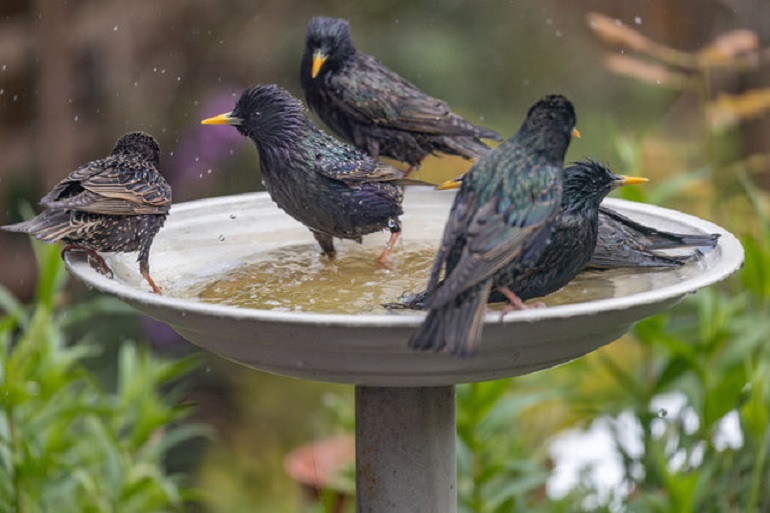
The location of the blue eggs is the starling bird’s nest. These are around 0. 8 inches in size with no markings on them.
In addition, the eggs laid by European Starlings are smaller than those laid by Robins, despite having a slight glossy appearance.
Starlings primarily search for cavities to live in and build their nests inside tree holes. Their nests are occasionally located in the attics of old homes. They also frequently go back to their former territories to deposit their eggs.
Eggs laid by Red-Winged Blackbirds come with extensive designs. They are primarily greenish blue in color, with some brown markings visible. They can also occasionally appear grey with surrounding blackish marks.
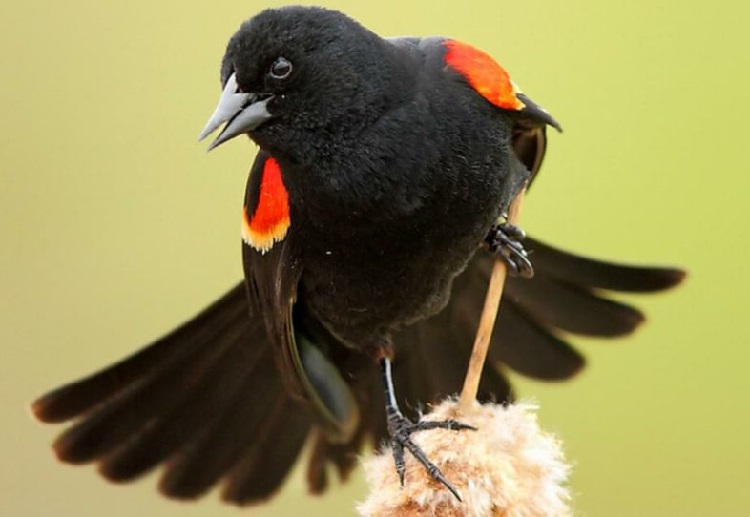
These colorful-feathered birds are the epitome of what spring has brought. Since they are native to North America, they can be seen there in large numbers.
They stay in their nests for extended periods of time because they are extremely territorial and devoted to one another. You would see them flocking around the marshland areas.
These birds favor remaining close to a water source when selecting a nesting location. Additionally, the species nests close to one another and they have strong familial ties.
Ultimately, the eggs laid by these birds are kept in their cup-shaped nests until they hatch.
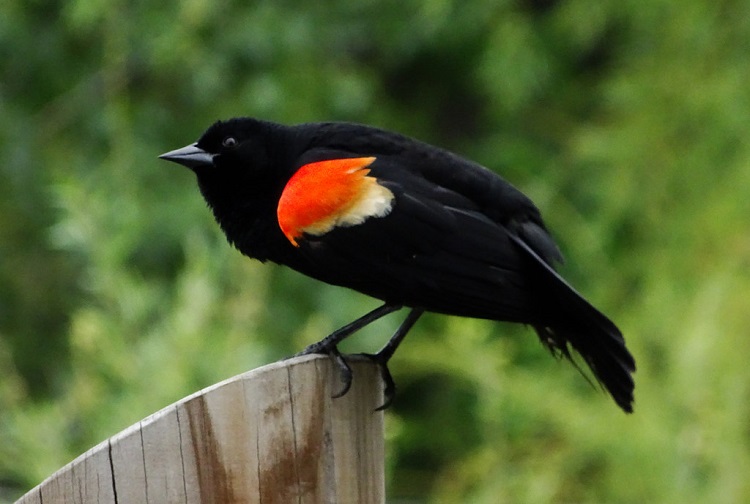
The breeding season is from May to June, and the bird usually returns to the same nest the following year if it’s still there.
The period of incubation is approximately 1114 days, and the period of nesting is approximately 14 days. Despite laying two to four eggs in a clutch, the females of these birds only have one to two broods of young.
These birds lay tiny blue eggs that are 7 cm in diameter inside and have an outer shell measuring 12 cm. 6 cm with a depth of around 7. 1 cm. They lay their eggs in mid-April after beginning their nesting late in March.
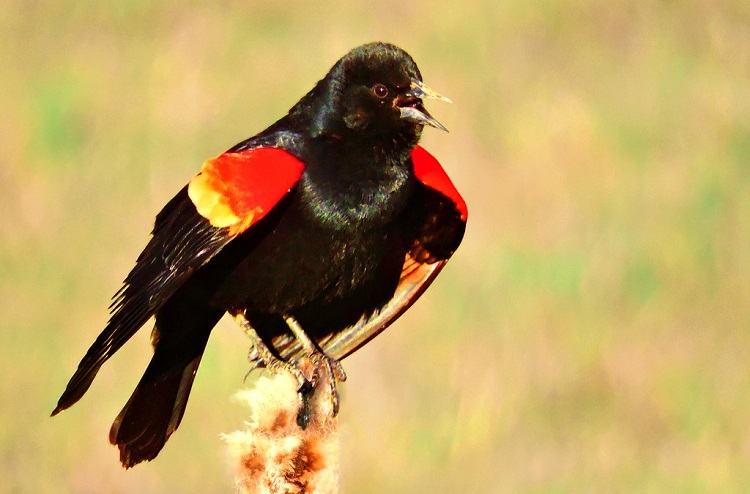
The Red-Winged Blackbirds are not loyal like most common birds. Rather, they mate with a different partner every year.
As a result, these birds are polygynous; you might be surprised to learn that a male can have up to fifteen female partners in a single season!
Dunnock birds have feathers that are strikingly similar to those of the House Sparrow.
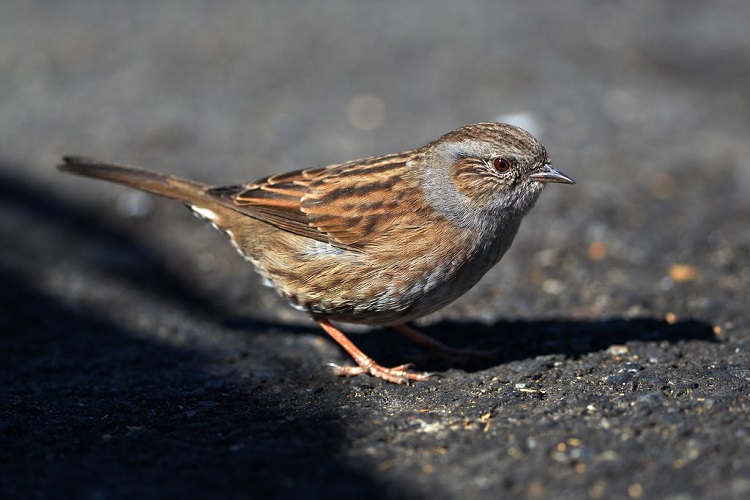
Many people have a tendency to mix them up. The primary distinction between these two species, though, is that the Dunnock birds lay blue eggs as opposed to the white ones laid by the House Sparrow.
Another name for this bird is the Hedge Sparrow. They prefer trees when it comes to constructing nests. The majority of the time, you can find their nests in the grass or the leaves of large trees.
These are medium-sized eggs with dimensions of 1. 9 x 1. 5 cm. This results in incredibly tiny but adorable-looking eggs! There can be four to five eggs in each clutch!
Being melodious songbirds, they are adored by nature lovers. Their eggs have the same charming appearance as they do.
They are typically turquoise in color and can be distinguished from other birds’ eggs by their unique appearance.
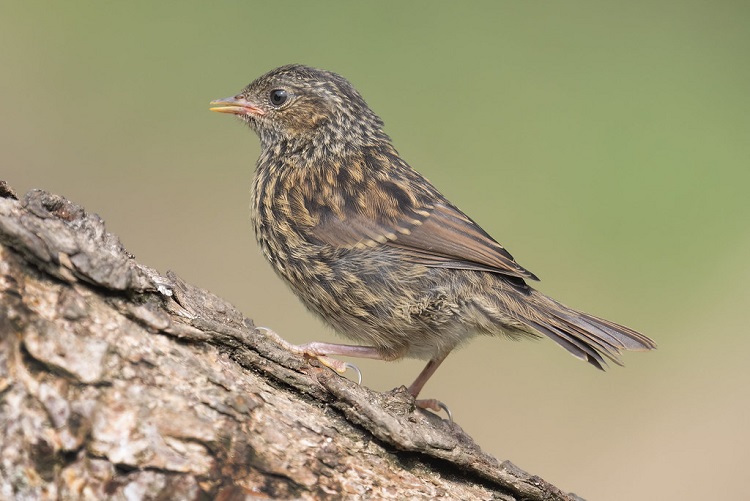
If you are camping in a dense forest, you might be able to see these eggs in the nest. In order to protect the eggs and young birds from predators, these nests are concealed in the greenery despite being close to the ground.
The breeding season begins around the middle of April, during which time females incubate the eggs.
The majority of the time, Dunnock birds lose their first brood due to predator attacks. One important factor might be their alluring appearance, which draws the attention of ground predators.
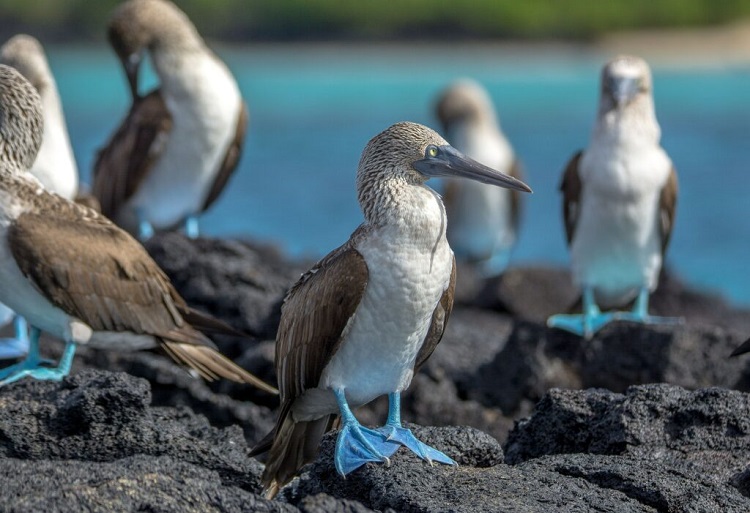
Additionally, this seabird belongs to a rare species that lays blue-colored eggs. The Blue-Footed Boobie distinguishes itself from other birds with its long neck and extremely sharp bill.
But thats not the only distinction these birds possess. Instead, what makes them stand out so much are their blue, webbed feet.
The Blue-Footed Boobies lay up to three eggs in a single clutch, most of which are green or pale blue in color. The fact that these eggs can take up to 45 days to hatch will astound you.
This is most likely the longest period of time that bird eggs take to hatch.

Both parents incubate these light blue eggs using their feet. When the hatchlings emerge, the mother tends to them while the father searches for food.
These are native South American birds, and what makes them special are the varied shades and colors of the eggs they lay.
Their colors range from blue to dark brown to violet and pink, and they are extremely glossy and shiny.
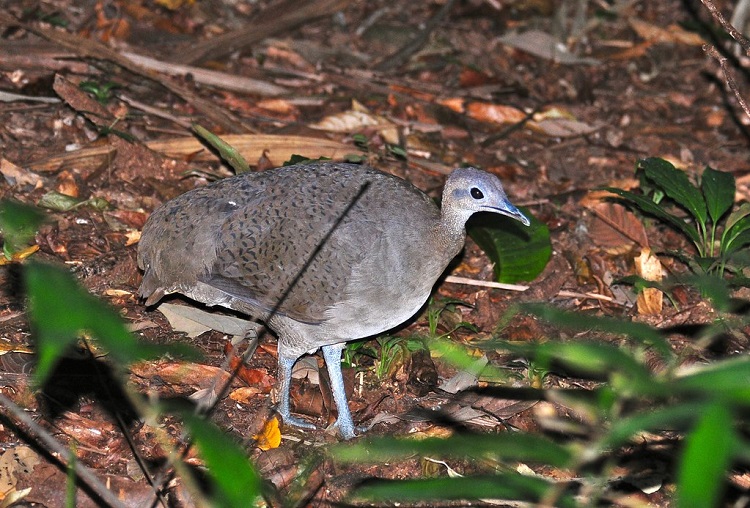
Because of their extreme gloss, these eggs stand out rather than disappear into the background. These birds are also ground dwellers, and they have ground-level nests.
The pigment known as nanostructure coloration is what gives these eggs their variety of colors. Actually, beneath this pigmentation that gives the egg its distinct shade, the egg’s color is just regular blue.
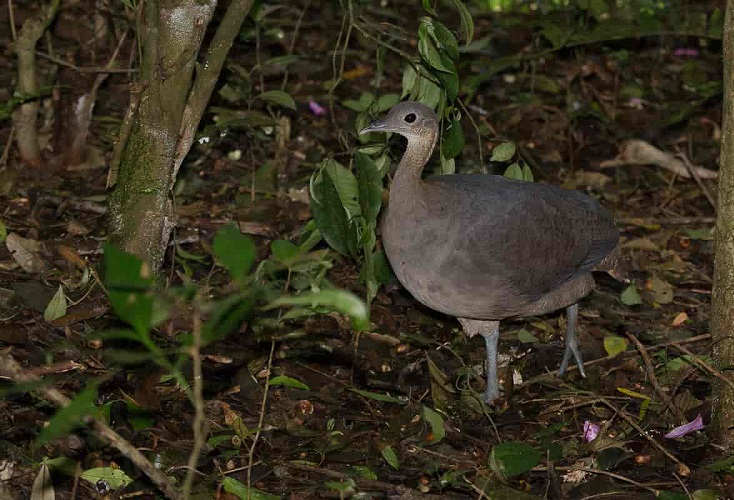
The primary cause of the shell’s glossiness is also its nanostructure. To evade attacks by predators, these birds attempt to camouflage the eggs by covering the nest with leaves or green grass.
The Common Myna is a fairly common bird in Asia, and it sometimes lays greenish-turquoise eggs. In each clutch, the female Common Myna lays two to five eggs, each of which may have a different color and brown spots on its shell.
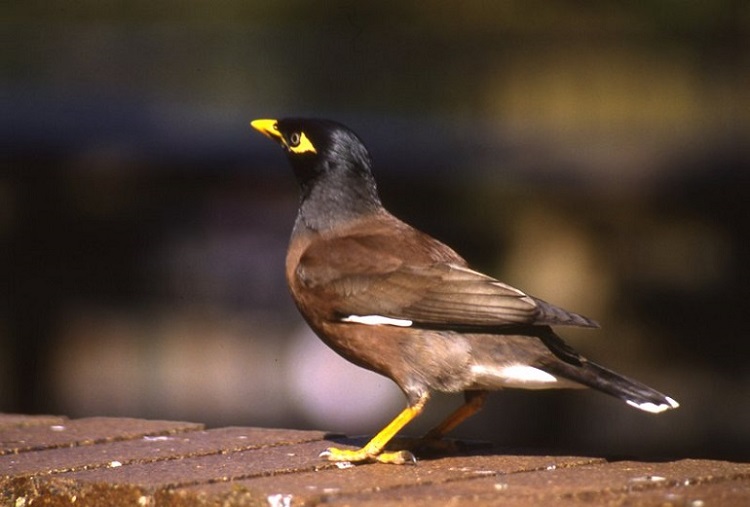
These birds breed twice a year. Common Myna has a great deal of respect for their home and prefers to do so in the same nest most of the time!
The unique quality of Common Myna is their capacity to mimic human speech.
The native birds of North America, known by their long tails, are called blue-gray gnatcatchers, and they are small, petite birds with very little feathers on their bodies.
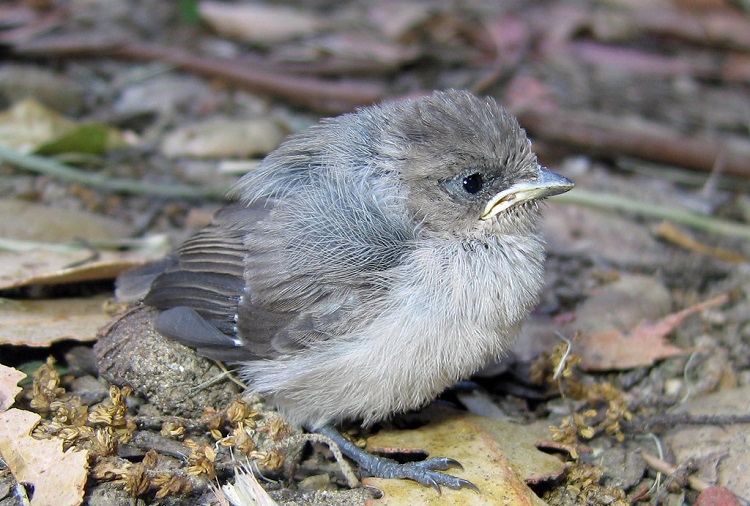
Another bird that lays blue eggs is the Blue-Gray Gnatcatcher. This species of bird fights valiantly to keep its beautiful eggs safe from harm!
These birds can lay up to five eggs at a time in each clutch. These eggs have brown dots all over them and are a light blue color. These spots can also appear red at times! These eggs are quite tiny, measuring just 0 6 in.
This species of bird only requires fifteen days for its eggs to incubate; its main predators are woodpeckers and jays.
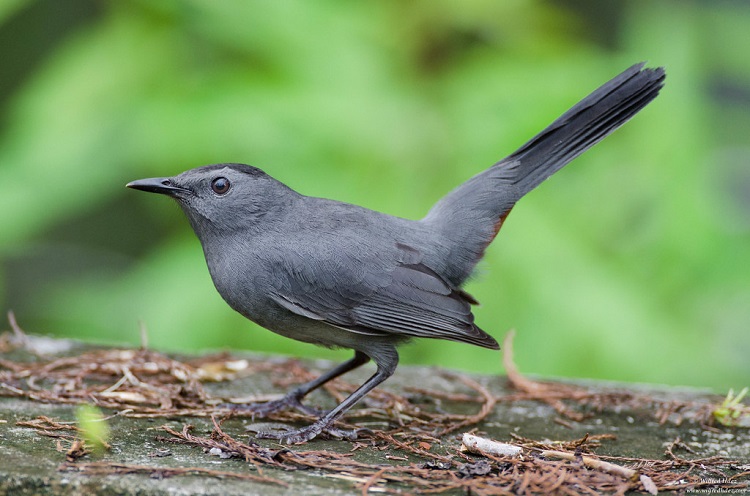
This species of bird is called Gray Catbirds because, sometimes, their calls resemble the sound of a cat’s meow! They lay blue eggs, with up to six eggs in each clutch.
The exact color of these eggs is turquoise-green. Sometimes, there are brown speckles on them as well. They lay blue eggs following their mating season, which runs from April to August.
This pigmented shell protects the yolk from the sun’s harmful rays and maintains its warmth.
FAQ
What kind of birds have blue eggs?
|
Bird Name
|
Egg Color
|
|
House Finch
|
Light Blue
|
|
Magpie
|
Green-Blue
|
|
Dunnock
|
Blue with Spots
|
What kind of bird lays white eggs?
What colors are natural bird eggs?
Do any birds lay red eggs?